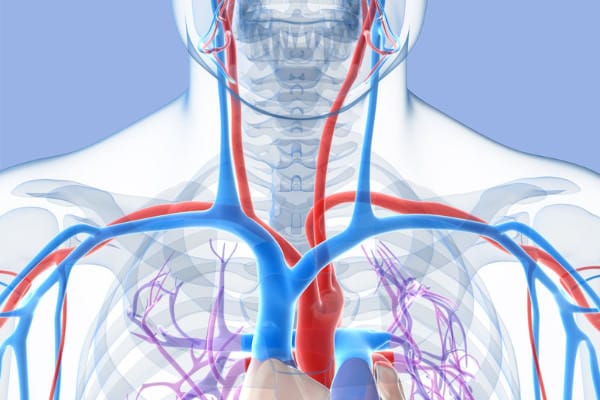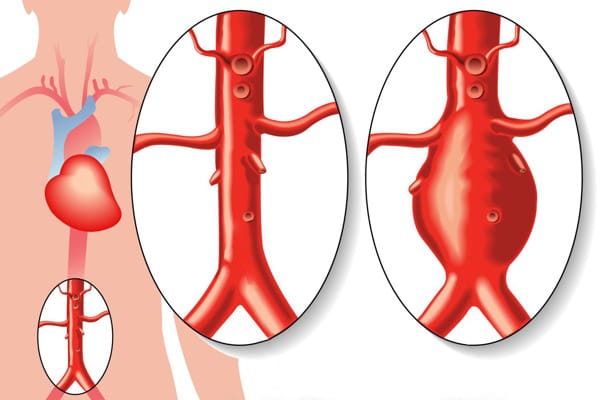Arterial TOS
Arterial TOS is the least common form of TOS, but it is a very serious disease. Bony structures compress the subclavian artery in the thoracic outlet and cause local arterial damage. Cervical ribs are more likely to cause arterial TOS than any other form of TOS.

Causes of Arterial TOS
Arterial TOS occurs when anatomic structures in the thoracic outlet compress the subclavian artery and create local or distal symptoms. Specifically, arterial compression causes local arterial damage, including arterial narrowing or aneurysm. In addition, blood clots can form in the damaged arterial segment, and cause distal arterial occlusion.
Repeated arterial compression in the thoracic outlet causes local damage to the subclavian artery. This damage may involve only the inner arterial wall, causing arterial scarring or stenosis (focal narrowing). However, if the damage involves the full thickness of the arterial wall, an aneurysm may develop. An aneurysm is a bulging or ballooning of the artery, with focal increased diameter of the artery.
In either type of damage, blood clots can form within the damaged arterial segment. A piece of the clot, called an embolus, may break off and travel downstream to occlude a distal artery. Such an arterial embolus may partially or completely block blood flow to the affected area of the arm. Complete loss of blood flow can cause necrosis, which means ’tissue death’, also known as gangrene. An acute arterial embolus requires urgent treatment. Arterial emboli may be singular or multiple, tiny or large. Arterial embolism may cause tiny areas of gangrene in the fingers, or large areas of gangrene in the arm or hand.
Click on the interactive media below to learn more about the causes, symptoms, diagnosis and treatment of arterial TOS.
[hypeanimations_anim id=”154″]
Symptoms of Arterial TOS
Arterial blood clot and occlusion causes symptoms such as pain, loss of pulse, and paralysis of the affected area. Patients often experience a sudden onset of symptoms. Learn more about the symptoms of arterial TOS here.
Diagnosis of Arterial TOS
Your doctor will find evidence of arterial occlusion, including a cold and pulseless arm. Imaging tests can quickly and accurately demonstrate the presence of arterial aneurysm, blood clot, and occlusion. Learn more about the clinical diagnosis and imaging diagnosis of arterial TOS here.
Treatment of Arterial TOS
Critical treatment decisions revolve around the presence or absence of a blood clot causing arterial occlusion. When present, acute arterial occlusion demands urgent treatment. When absent, surgeons can assess and treat patients with arterial TOS less urgently. Learn more about the treatment of arterial TOS here.


